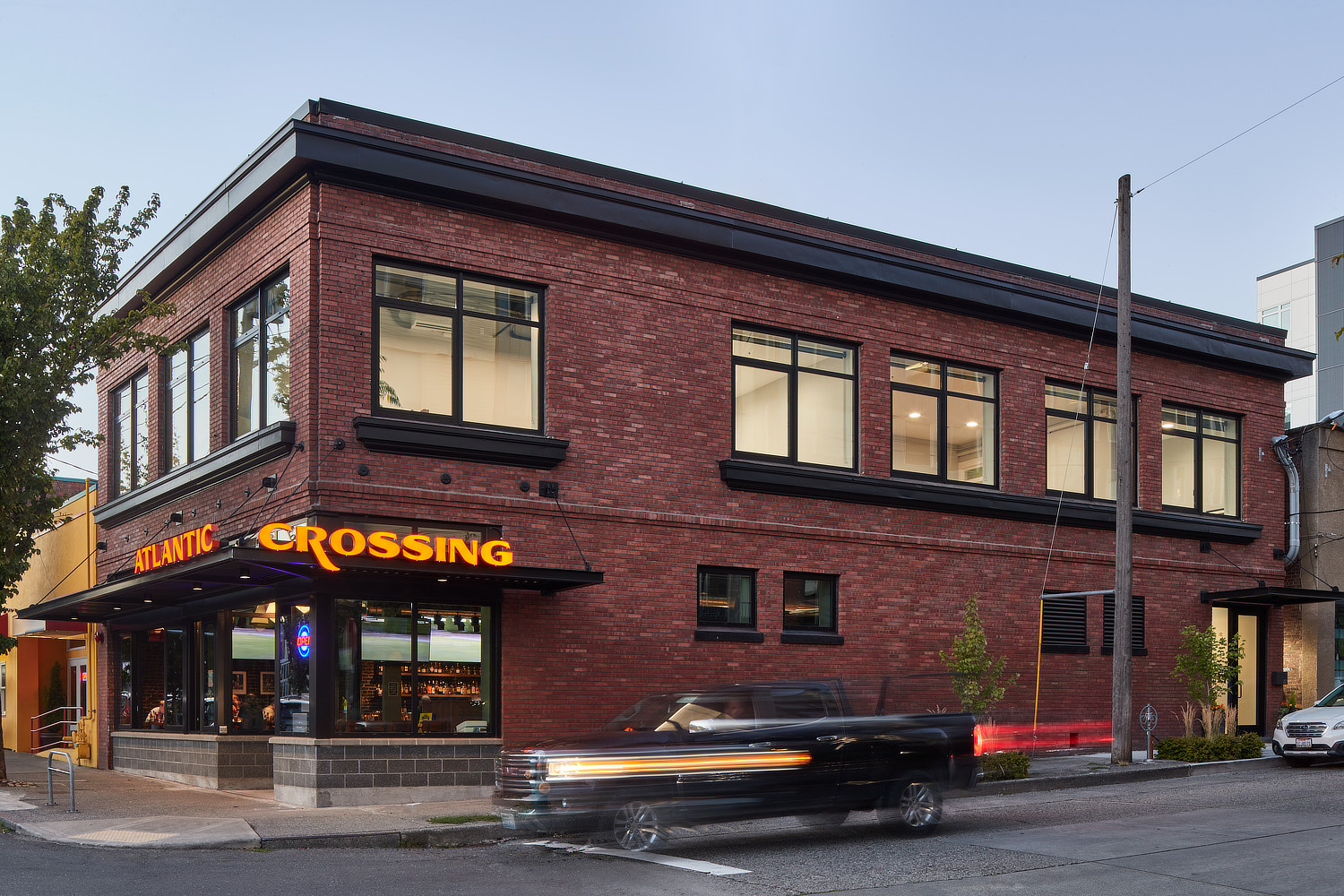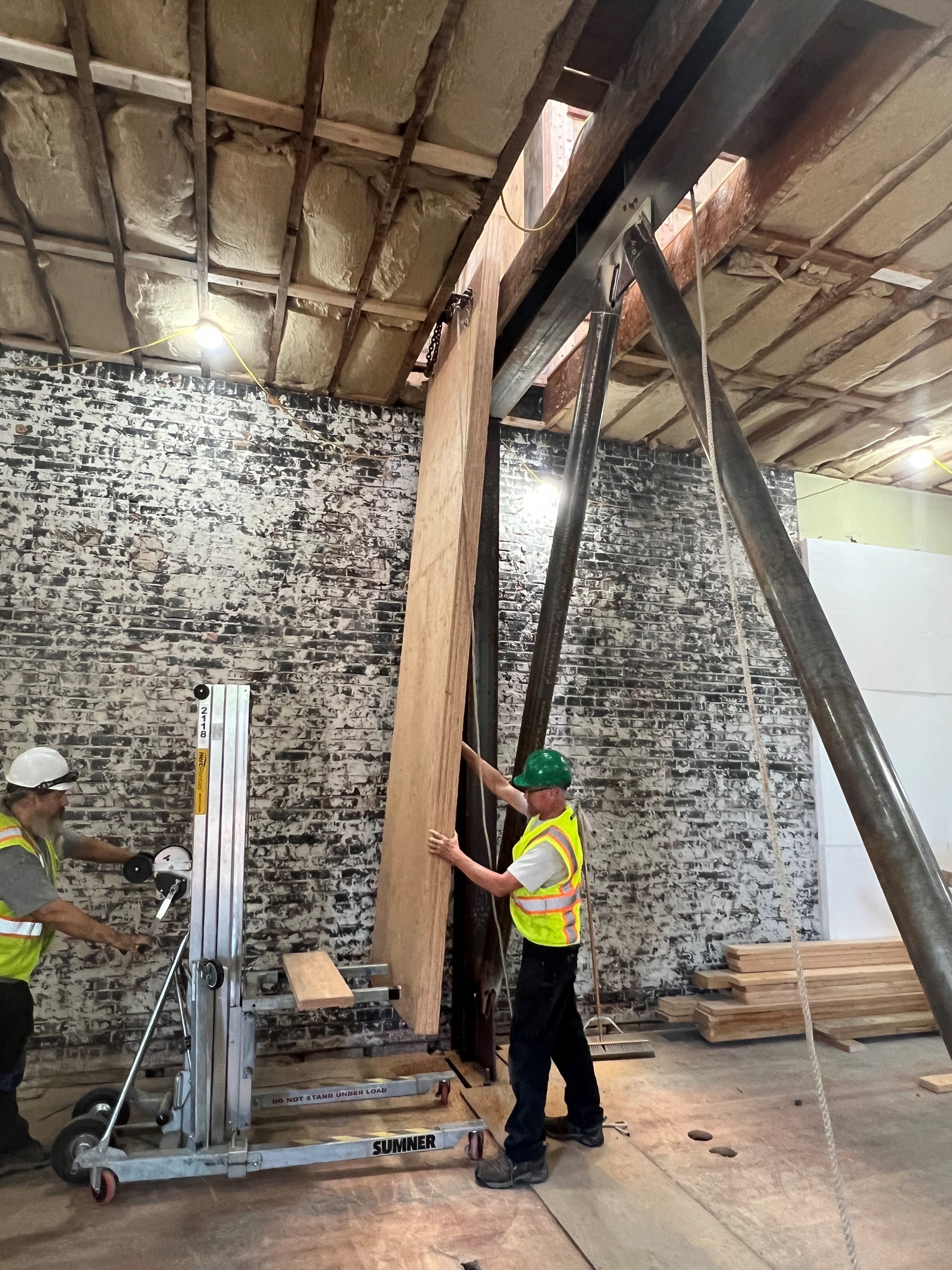Seattle Retrofit Stresses Sustainable Design
April 9, 2025
Boise Cascade’s Engineered Wood Products Stand Up to the Flexibility Test

The Hubbard’s Corner project is now historic in two senses. A seismic retrofit to a 1912 brick building in the Green Lake neighborhood of Seattle is a new standout in cutting-edge sustainable development.
In the upper-level offices, above a new local pub, is a firm called Davies-Crooks Associates. It’s co-run by Don Davies, a low-carbon visionary and veteran structural engineer. From his point of view, every angle of the building showcases the thinking and materials that will extend its lifespan another 100 years. The entire place serves as a living laboratory for adaptive reuse.
Spanning innovations in timber, cement, concrete, steel, and insulation, the project emphasized a hands-on, collaborative approach, especially with experts in material technology like Boise Cascade.
“Don’s work in sustainability and designing with fiber optimization in mind highlights how VersaWorks® veneer laminated timber (VLT) panels are an ideal fit in many applications,” said Dennis Bott, Director of Commercial Business states, “It was great to work with Don in this project and look to work with him in the future.”
Earthquake-Smart Design

“Behind the scenes, this was an effort to push the industry on next generation systems, not in any one particular material, but instead ask everybody: What’s the best of class? Where can we go next?” said Don Davies, principal at Davies-Crooks Associates and the developer behind the renovation. “Then we tried to integrate that throughout the project.”
Flexibility in design and performance matters even more when materials are put to the earthquake test. Davies used Boise Cascade’s VersaWorks VLT panels as shear walls for the entire second floor. As a structural element, shear walls are built to resist lateral forces like wind and seismic activity by transferring the stress of the forces throughout the structure.
Davies sized up the next generation of veneer laminated timber (VLT) in the VersaWorks line against other options like cross-laminated timber (CLT).
“I wanted to celebrate what I thought was the best of solutions. Relying on a veneer panel compared to two-by boards placed in the more traditional CLT panel, we were able use higher bending stresses because a majority of the veneers could be better oriented toward a ‘fiber optimized’ direction for the material; and we could better optimize the wall thickness. This meant less wood fibers to do the same job. That’s optimization, that’s more sustainable, that’s cost effective. It was a win-win-win for the project,” said Davies.
“Placement was also really simple. We ordered raw panels that were slightly longer than needed. We field cut and bolted them to the unique geometries of the existing building, with minimal fabrication challenges and no RFI’s. I would definitely use them again in this application.”
Boise Cascade has been testing VersaWorks as a veneer laminated timber, doing research and development on bending stresses and more. Data shows that VersaWorks VLT panels have a high strength-to-weight relative to other wood products. When flexibility means everything, these mass timber panels stand up to the pressure test. Using sustainable materials with optimized fiber allows for the highest amount of sequestered carbon too.
“Carbon is just another way to tell that same story through a sustainability lens,” Davies said. “Using materials smarter can save you money and save you carbon.”
Solving Sustainability Problems
Over a storied 35-year career, Davies has largely focused on building high rises in dense urban environments around the globe. He got into structural engineering because he’s a problem solver, and he thrives when buildings have challenges that demand creative solutions.
“Adaptive reuse is a natural fit for me. Honestly, I’m an optimizer at heart,” he explains. “I’m a huge fan of conservation of resources.”
He sees vast possibilities for Boise Cascade’s engineered wood products not only as shear panels, like he used in the Hubbard’s Corner project, but also for floor and roof panels as well.
“I’ve been promoting something for a very long time that I call ‘fiber optimized design.’ This is really at the heart of engineered wood products,” Davies says.
He’s zeroed in on how to optimize new and existing spaces by bringing smarter solutions to the table. These ideas often do a better engineering job and save money too.
“I have a pretty good perspective of the material and product suppliers that are doing things well, and those that are not, or are just following,” noted Davies. “Bringing forward next-generation ideas like the VersaWorks VLT panels is leadership, and a smart use of material. How can we do better? Let’s lead by example.”